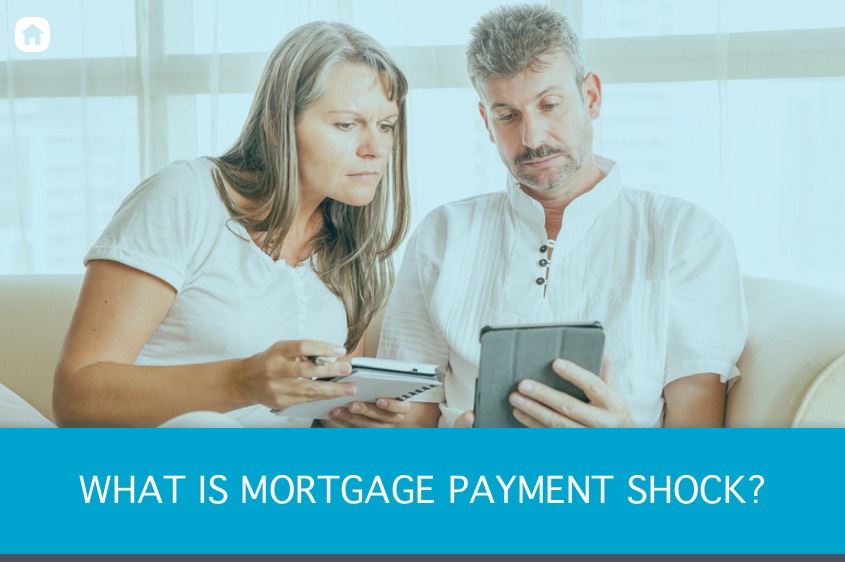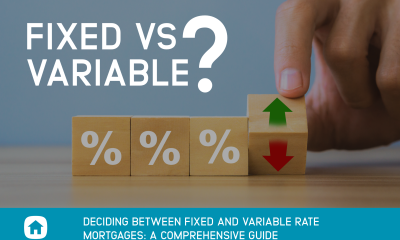Finance
What is Mortgage Payment Shock, and how do you prepare for it?

WHAT IS MORTGAGE PAYMENT SHOCK, AND HOW TO PREPARE FOR IT?
Don’t get shocked by mortgage rate jumps...
Payment Shock is a nasty surprise that many people are not prepared for, simply because no one is telling them about it.
Payment Shock occurs when we have received a low-interest rate for a 3-5 year term, only for interest rates to rise back to more historically normal levels throughout the period of the mortgage.
Meaning, when you get your next mortgage, you’ll have to pay a much higher payment than you were paying.
In some situations, these payment increases can be significant, the larger your mortgage, the harder you may be hit.
HOW PAYMENT SHOCK COULD AFFECT YOU!
For example, based on a $450,000 mortgage and the current rate environment we’re in, I estimate you could potentially see the following impact on your mortgage payment over a five-year period:
Current MTGE | Current MTGE | Future MTGE | Future MTGE | |
|---|---|---|---|---|
|
|
|
|
Payment Shock = $363.25
We haven't seen a 5 year fixed mortgage rate higher than 4% in a really long time, but the realty is, the big banks would like to get mortgage rates back to historical averages.
Just because they have been low for the past 10 years or so don't expect them to stay that way.
WHAT CAN I DO TO AVOID PAYMENT SHOCK?
There is no way to avoid "Payment Shock" as we can't stop rates from rising in the future and selecting a longer term mortgage would eliminate any savings and defeat the purpose of choosing shorter term mortgages.
Yes, a five-year term mortgage is mid to short term when considering your mortgage will likely be around for 25 years.
However, to help our clients protect themselves against Payment Shock and prepare for higher rates we recommend to increase your mortgage payment each year by a small amount.
It's that easy, and it has a significant impact on your mortgage!
Making small incremental adjustments to your monthly payment helps you ease into the higher future payments without being hit by it all of sudden.
This not only protects you from Payment Shock but the small increase in your payment goes directly towards the principle helping you pay your mortgage off years faster and saves you thousands of dollars in interest.
To continue with our previous example by implementing this strategy a annual increase of $90.81 starting in the second year would build your payment up to the point where there would be no Payment Shock.
The result is that you save 3.4 years off your mortgage and eliminate $20,251.78 in mortgage payments and Interest.
Total Eliminated | Reduction in the | Shortened |
|---|---|---|
|
|
|
Small changes early on in your mortgage can have a huge impact 20 years from now!
Increasing your mortgage payments is not that different from investing except in reverse. You may not see the advantages early on, but over time the savings compound, and your mortgage balance years of payments are just washed away.
AM I COMITTED TO THIS ONCE I START?
Just to be clear, these are voluntary increases to your payment and only take effect when you decide to pull the trigger. So if one year is a little tight and you don't want to increase your payment, no worries you don't have to.
Alternatively, if you may have been too aggressive in prior years if you need to reduce your payment, most banks will allow it, so there is really no down size to the strategy.
All we are trying to do is prepare for rising interest rates and ease you into a higher payment, if after 5 years you didn't get all the increases in, the worst case scenario is your Payment Shock won't be as high as it could have been, and that's a pretty could worst case if you ask me.
HOW DO I PICK THE AMOUNT OF THE INCREASE?
Picking the amount to increase your mortgage payment requires a few calculations, but first you have to pick the interest rate that you want to protect your self from.
Conservative Protection
Add 1.00% to your current mortgage rate.
Use this rate if you believe that interest rates will not rise very much over the term of your mortgage, but you see the value in not paying your minimum payment and want to work towards paying your mortgage off a little faster.
Standard Protection
Add 1.50% to your current mortgage rate.
If you are on a tight budget, and your mortgage payment is a large portion of your income I recommend using at least 1.50%. A tighter budget usually requires more time to prepare for adjusts and being a little more prepared for renewal is always better. Plus you will really see your balance come down quick and knock some serious years off your mortgage.
Aggressive Protection
Add 2.00% to your current mortgage rate.
Ok, you may not believe rates will jump this high, but you want to commit to protecting yourself against anything the market could throw at you (well not quite everything, there was a time in the 80/90's where rates peaked near 20%), and you want to pay off your mortgage as fast as possible. Mortgage burning party, he we come!
HOW TO CALCULATE PAYMENT SHOCK!
Ok, now that you know what you know how much you want to protect yourself against, we can start with the math.
1.
Calculate your mortgage balance at the end of your current term.
Most of the time you can find that balance on your annual mortgage statement, of if you are just getting a mortgage on your disclosure statement.
2.
Take that mortgage balance and now calculate the new payment you would pay using the rate you think you will pay at maturity.
3.
Subtract your current payment from the number you just calculated, and then divide by the number of years remaining in your mortgage.
Just to let you know, If you don't want to run any calculations, just send me an email or message me and I will do the math for you. This is the stuff I love doing, saving my clients money!
TAKE THE PLUNGE AND TRY A VARIABLE RATE!
This strategy works great for variable rate mortgages as well with only a few small modifications!
Pick a variable rate mortgage (which is almost always lower than the fixed rate), set your initial payment to the current 5 year rate, and then run the protection level to determine a yearly increase.
With a variable rate being so much lower than a fixed rate, the impact (or savings) to your mortgage is usually way higher, this is a great way to get the lowest rate and still protect yourself from payment volatility.
THE BEST PART OF PREPARING FOR PAYMENT SHOCK!
If you prepare for payment shock and interest rates don't rise, keep your payment amount the same and watch the benefits compound even further during your next term.
Paying off your mortgage is a huge milestone in anyone's financial plan, and by making seemingly little changes now can gain that momentum to help you achieve that milestone years faster than the average Canadian.
It doesn't take much to hack and slash years off amortization.
There is more to your mortgage payment than just paying the minimum amount the bank requires. By letting the bank set the pace for your mortgage repayment you are taking the risk that 15 or 20 years from now interests aren't much higher than they are now.
Take full advantage of these low rates, but don't be lulled into a sense of security, be aware that interest rates may rise and take action now to protect yourself.
WANT HELP PROTECTING YOURSELF FROM PAYMENT SHOCK?
Whether I helped you set up your mortgage, or this is the first article you have read of mine, or anywhere in between, feel free to reach out to me and I will help you pick the best mortgage payment for you.
Plus at the same time we can do a quick review to find out if there are any other ways I can help you save money and pay your mortgage off faster.
Contact me today and we can start putting this into action for you!
-

 Buying a Home5 years ago
Buying a Home5 years ago3 Simple Rules to follow to ensure credit doesn’t stop you from buying a home!
-

 Credit6 years ago
Credit6 years agoWhat Happens to My HELOC When I Sell My Home?
-

 Business4 years ago
Business4 years agoToronto, Ontario and Vancouver real estate boards urge suspension of open houses
-

 5 Mortgage Secrets7 years ago
5 Mortgage Secrets7 years ago5 SECRETS THE BANK DOESN’T WANT YOU TO KNOW ABOUT YOUR MORTGAGE
-

 Buying a Home6 years ago
Buying a Home6 years ago6 Reasons to get Pre-Approved for a Mortgage Early
-

 5 Mortgage Secrets6 years ago
5 Mortgage Secrets6 years agoTHE PENALTY COVER UP Mortgage Secret 3 of 5
-

 News12 months ago
News12 months agoFixed Vs Variable Rate Mortgages: Decoding The Differences To Make Your Best Decision
-

 Business4 years ago
Business4 years agoBuffett says economy is slowing amid virus fears





